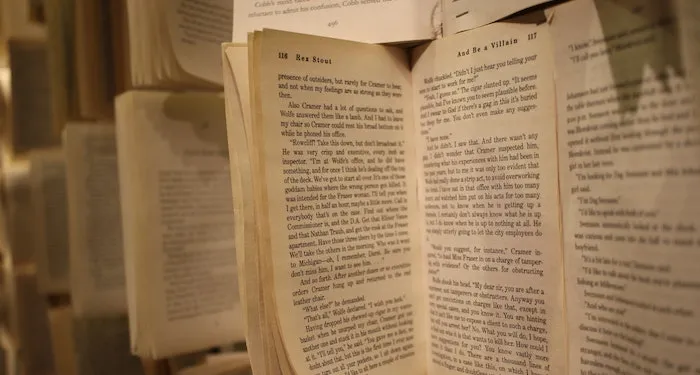
Ode To The Paperback Book
If you browse Bookstagram or book review blogs, you’re likely to see a parade of brand new hardcovers, posed for photos. Hardcovers are the representation of new releases, complete with artful dust jackets and stiff spines, and seem to be particularly appealing to those who show off their book collections online or who like to collect books as part of a set. However, I’m here today to sing the praises of the humble, often backlist, paperback. From new releases to mass market products, these are the types of books I remember first picking up as a kid. Below, I’ve rounded up some reasons why I encourage you to embrace the paperback book.
They’re Cheap(er)
While I’m all about supporting authors, there are only so many new release hardcovers I can justify buying each month before my budget begs me to take a break. Paperbacks are a great way to snap up titles, especially backlist ones, that you want to own rather than borrow. Paperbacks also feel like less of a purchasing commitment, both because they cost less but also because there’s something about buying a hardcover version that implies a Very Serious Intention for reading this book. If you’re like me and the idea of book commitment scares you, paperbacks feel like more of a whim which, paradoxically, makes me more likely to read them.
They’re Easier to Cart Around
My dedication to never leaving the house without an “emergency book,” combined with my reluctance to read on my phone, means that I need a book (or books) that can be easily stashed in a purse; paperbacks make this possible without weighing me down. Plus, there’s something about paperbacks, especially mass market ones, that lends themselves to being held in one hand and read while waiting in a grocery line or at a bus stop. Hardcovers just feel too hefty for a book on the move, but paperbacks don’t demand that you sit down to read them; they’re there for you whenever you can grab a few minutes to read.
You Can Find Them Used
Okay, so you can definitely find plenty of used hardcover books as well. But if you’re really looking to maximize your book buying dollars, paperbacks can often be found for less than five bucks at your local used bookstore, which makes it easier to stock up on a series or take a chance on a new author. Plus, in my experience, people are more likely to be willing to part with paperbacks, which means that they tend to show up at donation shops and Little Free Libraries more often. If you’re someone who likes to plan out your new release hardcover purchases by month, quarter, or year, paperbacks (particularly used ones) can give you more wiggle room in your budget and access to more backlist titles.
They Bring Me Back to What First Made Me Love Reading
One of my most treasured, bookish memories is the used Baby-Sitters Club paperbacks stashed on the bottom of a bookshelf at a local bookstore. If my memory is correct, they were each being sold for a dollar, and every bookstore trip, I would carefully read the summaries on the back covers, selecting a few I hadn’t read yet to bring home. While a lot of critically acclaimed literature debuts in hardcover, so many of us can probably trace early book love back to a series that was published in the kind of cheap, paperback binding designed to appeal to kids. It wasn’t just about the plot or characters of these books, but the ability they gave me to consume books at a speed that was, quite frankly, frightening. This reading rate helped me conceive of myself as a reader, and working my way through a paperback series as an adult helps bring me back to that feeling.
Of course, the key is to read what you love in the format that works for you. But there’s something so special about the physical experience of a paperback book; to me, they feel more personal and show the impact of the hands of the readers that have held them. Carting around a paperback (or three) helps reassure me that I always have a book to tuck into, and having them on my shelves, even if only for a brief time, reminds me of how much joy I find in reading.








